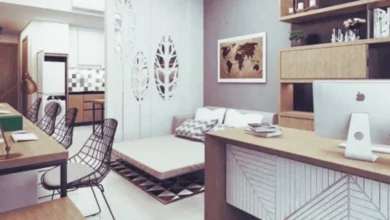Finding Your Dream Internship in the Heart of Korea

Embarking on a journey to find your dream internship is an exciting and transformative experience. What if your dream internship could take you to the heart of one of Asia’s most dynamic and culturally rich countries – Korea?
With its booming economy, technological advancements, and vibrant culture, South Korea offers a unique and compelling destination for interns seeking valuable professional experience while immersing themselves in a rich tapestry of traditions and innovations. In this article, we’ll guide you through the steps to find your dream seoul internships in Korea.
Why Choose Korea for Your Internship?
Korea, often called the “Land of the Morning Calm,” is a country that seamlessly blends tradition with modernity. Its booming economy, led by globally recognised conglomerates such as Samsung, Hyundai, and LG, offers many internship opportunities across various industries. Here are a few reasons why choosing Korea for your internship is an excellent decision:
- Technological Advancements: Korea is renowned for its cutting-edge technology and innovation. From electronics to artificial intelligence and biotechnology, you’ll find internships that allow you to work on groundbreaking projects.
- Cultural Enrichment: Korea boasts a rich cultural heritage, including its famous cuisine, traditional Hanbok clothing, and ancient palaces. An internship in Korea allows you to immerse yourself in this cultural treasure trove.
- Language Learning: Korean can be a fascinating option if you’re interested in learning a new language. Many internship programs offer language courses as part of their package, allowing you to develop your language skills alongside your professional ones.
- Networking Opportunities: Korea’s bustling business environment means you’ll have the chance to network with professionals and potentially secure future job opportunities.
Finding Your Dream Internship
- Define Your Goals: Before you start your search, clearly define your internship goals. What industry are you interested in? What skills do you want to develop? Knowing your objectives will help you narrow down your options.
- Utilise Online Resources: Numerous online platforms and job portals are dedicated to internships in Korea. Websites like LinkedIn, Glassdoor, and Korean job search engines can be valuable resources for finding internships in your desired field.
- Contact University Career Services: Many universities have career services departments that can assist you in finding internships abroad. They may have partnerships with Korean companies or access to exclusive opportunities.
- Reach Out to Korean Companies: Don’t hesitate to contact Korean companies directly. Send them your resume and express your interest in interning with them. Personalised emails can go a long way in making a positive impression.
- Consider Internship Programs: Various organisations and agencies offer internship programs in Korea. These programs often provide housing, language courses, and cultural activities in addition to the internship. They can be a convenient and well-structured way to experience Korea.
Visa Requirements
To intern in Korea, you’ll need a specific visa. The appropriate visa type depends on the nature of your internship, but the D-2 (Internship) visa is commonly used for this purpose. You’ll need a valid internship offer, sponsorship from a Korean company, and other supporting documents to obtain this visa. It’s important to research the specific visa requirements and consult your home country’s Korean embassy or consulate for guidance.
Conclusion
Finding your dream internship in the heart of Korea is an exciting opportunity that can open doors to a world of professional growth and cultural enrichment. With Korea’s dynamic economy, technological advancements, and rich cultural heritage, it’s a destination that offers a unique blend of career prospects and personal experiences. By defining your goals, utilising online resources, reaching out to potential employers, and considering internship programs, you can make your dream internship in Korea a reality. So, take the plunge and embark on an unforgettable journey to the Land of the Morning Calm!
Explore the endless possibilities of creativity and expression at www.wordplop.com – where words come to life.






